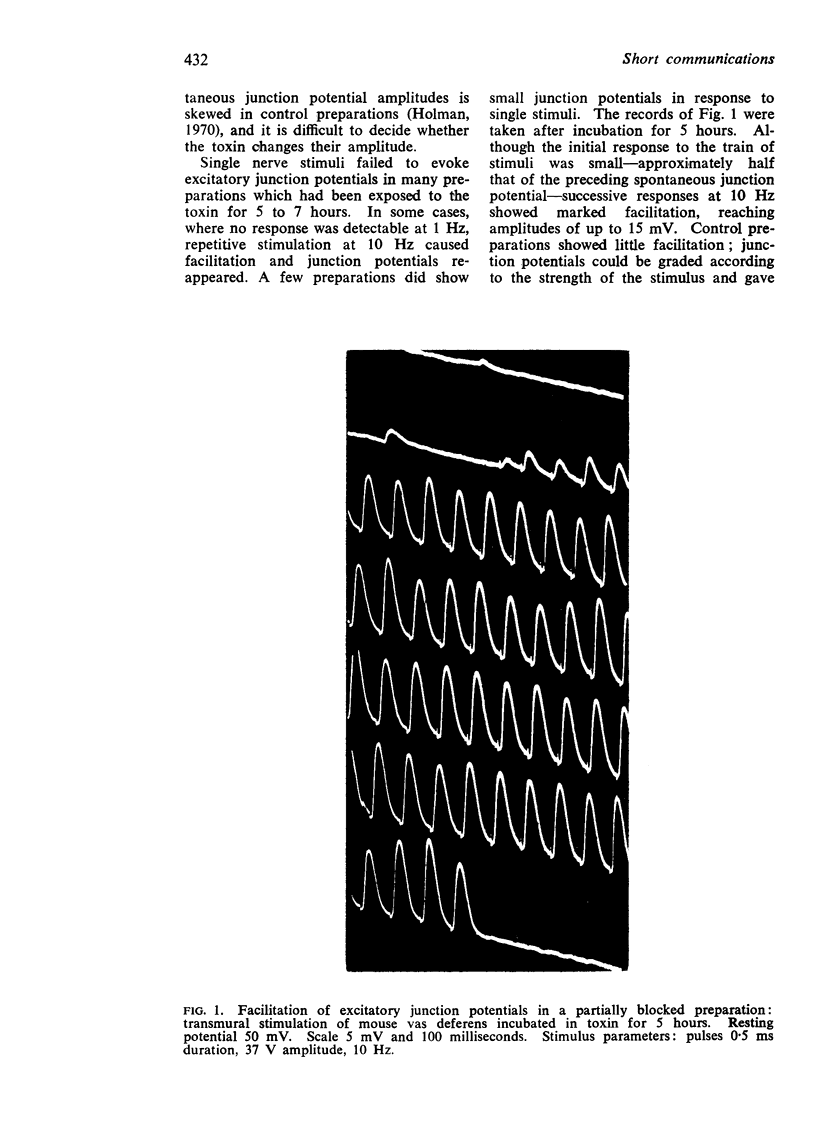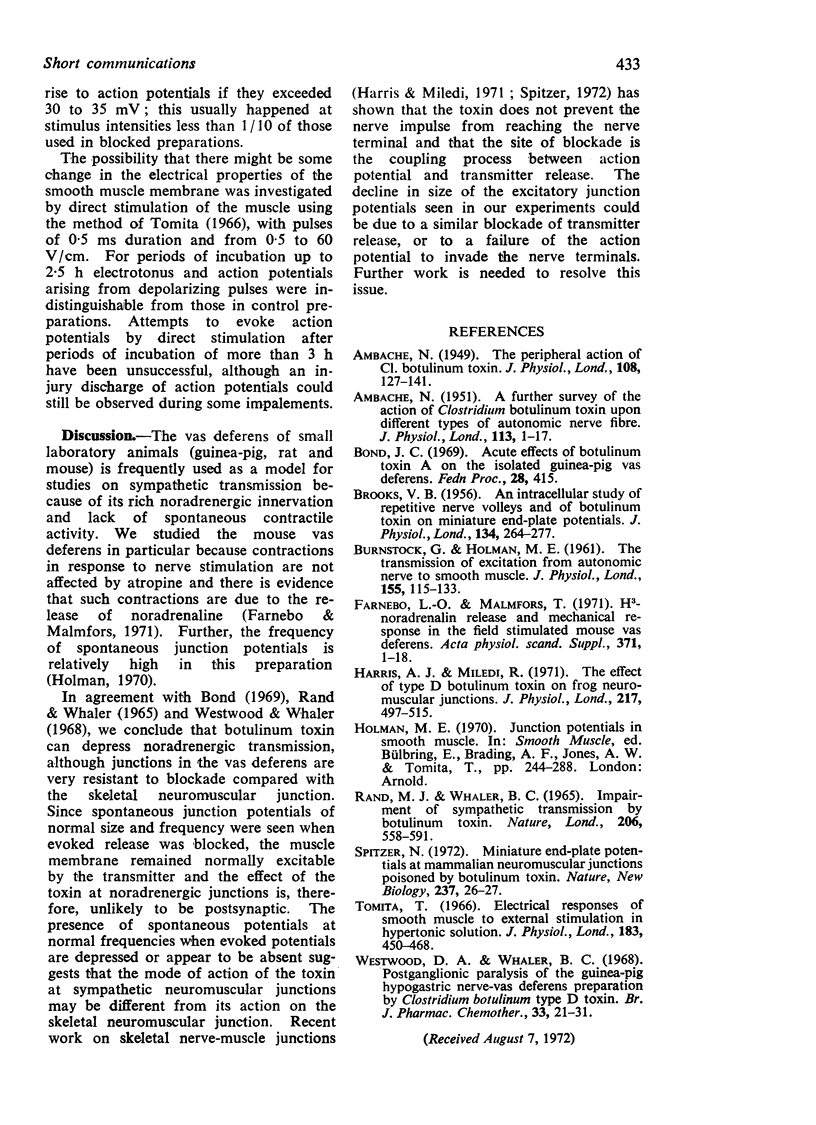Abstract
Botulinum toxin (Type A) depressed or abolished transmission from postganglionic nerves to smooth muscle of isolated preparations of guinea-pig and mouse vas deferens. The time course of blockade was 2 to 6 times slower than that observed with the same concentration of the same batch of toxin on the rat diaphragm. Spontaneous excitatory junction potentials were still observed after 7 h exposure, indicating that the smooth muscle membrane was still able to respond to noradrenaline. Depression of transmission is probably due to a presynaptic action of unknown nature.
Full text
PDF


Selected References
These references are in PubMed. This may not be the complete list of references from this article.
- AMBACHE N. A further survey of the action of Clostridium botulinum toxin upon different types of autonomic nerve fibre. J Physiol. 1951 Mar;113(1):1–17. doi: 10.1113/jphysiol.1951.sp004551. [DOI] [PMC free article] [PubMed] [Google Scholar]
- Ambache N. The peripheral action of Cl. botulinum toxin. J Physiol. 1949 Mar 15;108(2):127–141. [PMC free article] [PubMed] [Google Scholar]
- BROOKS V. B. An intracellular study of the action of repetitive nerve volleys and of botulinum toxin on miniature end-plate potentials. J Physiol. 1956 Nov 28;134(2):264–277. doi: 10.1113/jphysiol.1956.sp005642. [DOI] [PMC free article] [PubMed] [Google Scholar]
- BURNSTOCK G., HOLMAN M. E. The transmission of excitation from autonomic nerve to smooth muscle. J Physiol. 1961 Jan;155:115–133. doi: 10.1113/jphysiol.1961.sp006617. [DOI] [PMC free article] [PubMed] [Google Scholar]
- Farnebo L. O., Malamfors T. 3 H-noradrenaline release and mechanical response in the field stimulated mouse vas deferens. Acta Physiol Scand Suppl. 1971;371:1–18. doi: 10.1111/j.1748-1716.1971.tb05210.x. [DOI] [PubMed] [Google Scholar]
- Harris A. J., Miledi R. The effect of type D botulinum toxin on frog neuromuscular junctions. J Physiol. 1971 Sep;217(2):497–515. doi: 10.1113/jphysiol.1971.sp009582. [DOI] [PMC free article] [PubMed] [Google Scholar]
- Rand M. J., Whaler B. C. Impairment of sympathetic transmission by botulinum toxin. Nature. 1965 May 8;206(984):588–591. doi: 10.1038/206588a0. [DOI] [PubMed] [Google Scholar]
- Spitzer N. Miniature end-plate potentials at mammalian neuromuscular junctions poisoned by botulinum toxin. Nat New Biol. 1972 May 3;237(70):26–27. doi: 10.1038/newbio237026a0. [DOI] [PubMed] [Google Scholar]
- Westwood D. A., Whaler B. C. Postganglionic paralysis of the guinea-pig hypogastric nerve-vas deferens preparation by Clostridium botulinum type D toxin. Br J Pharmacol Chemother. 1968 May;33(1):21–31. doi: 10.1111/j.1476-5381.1968.tb00470.x. [DOI] [PMC free article] [PubMed] [Google Scholar]


